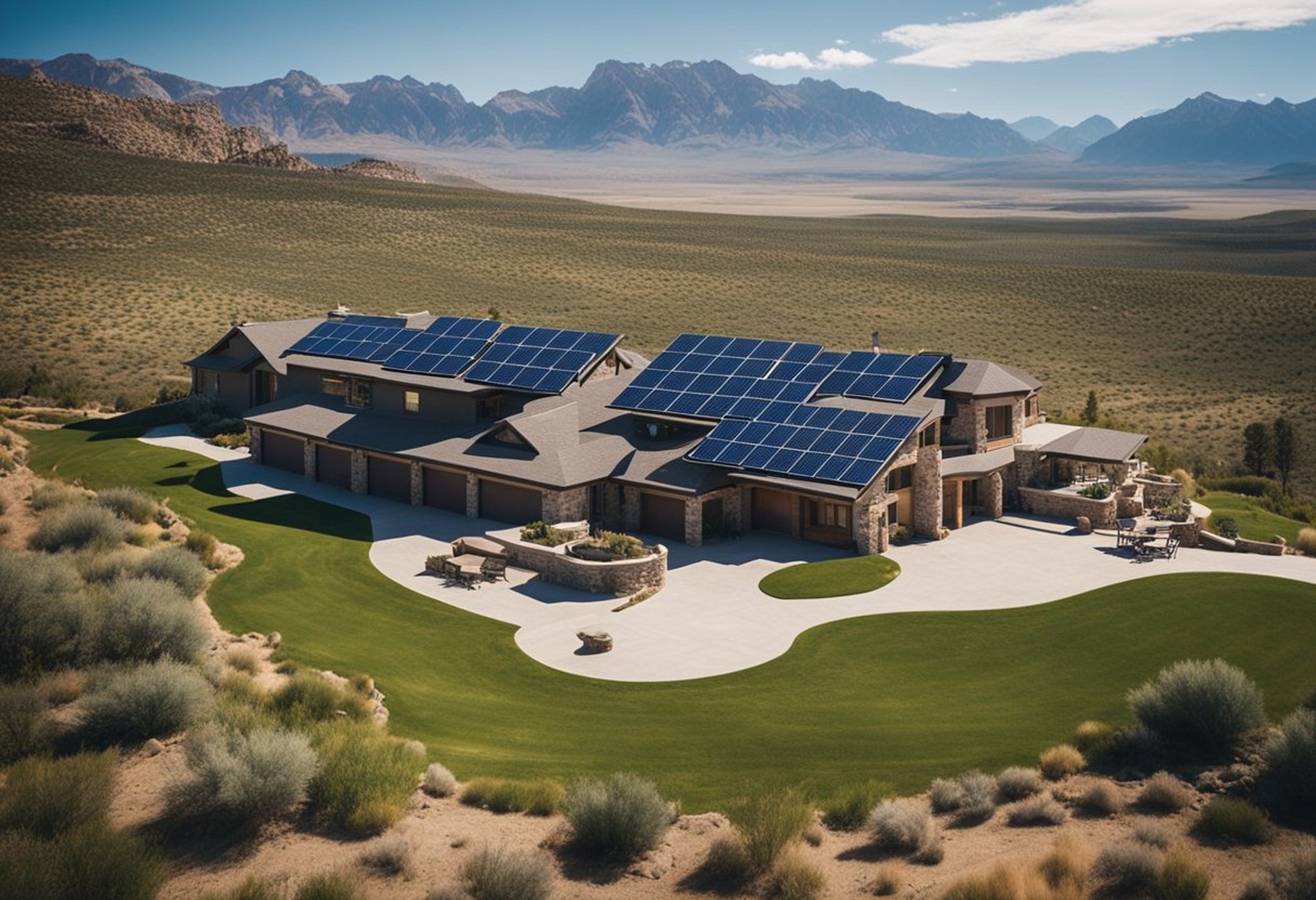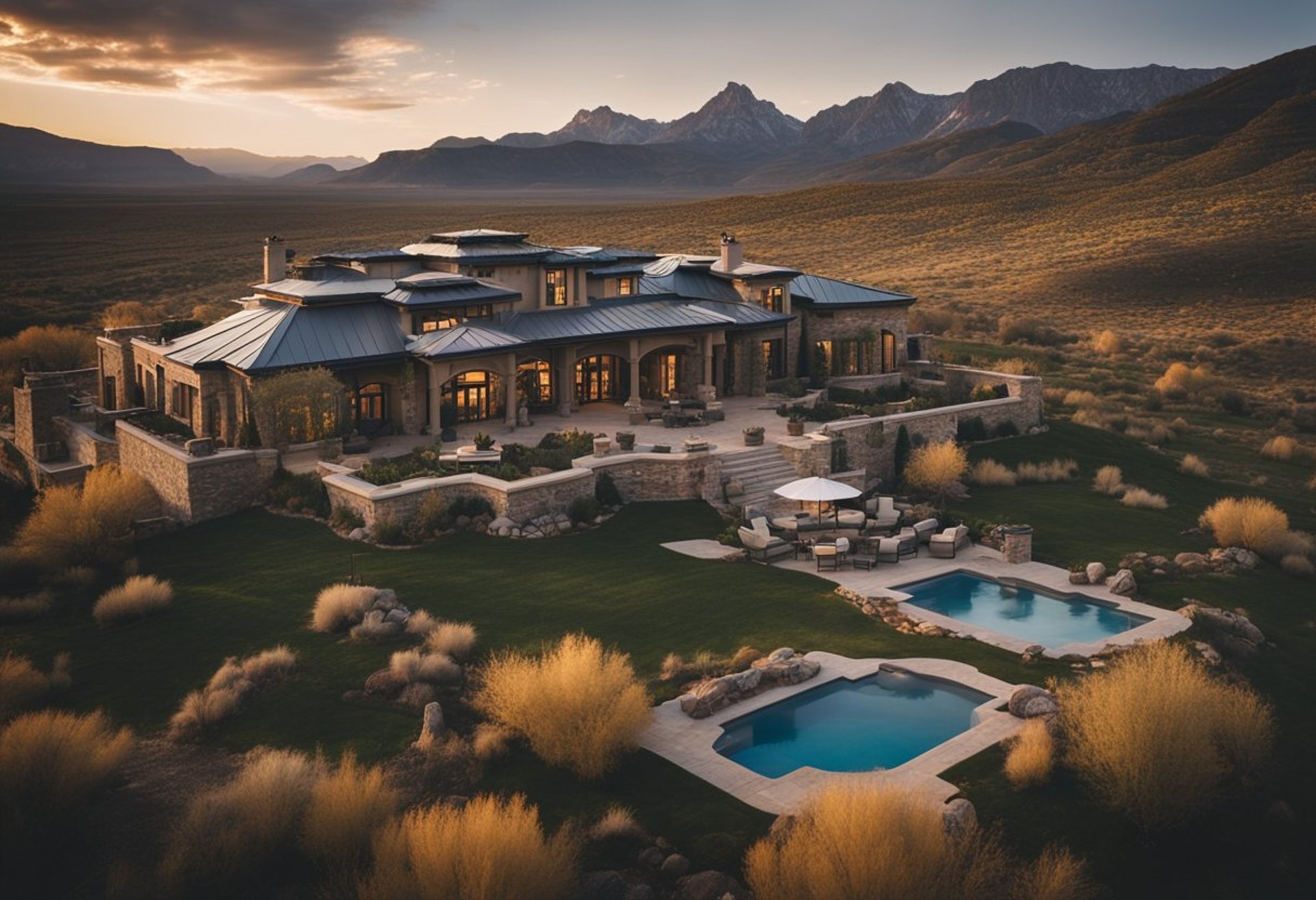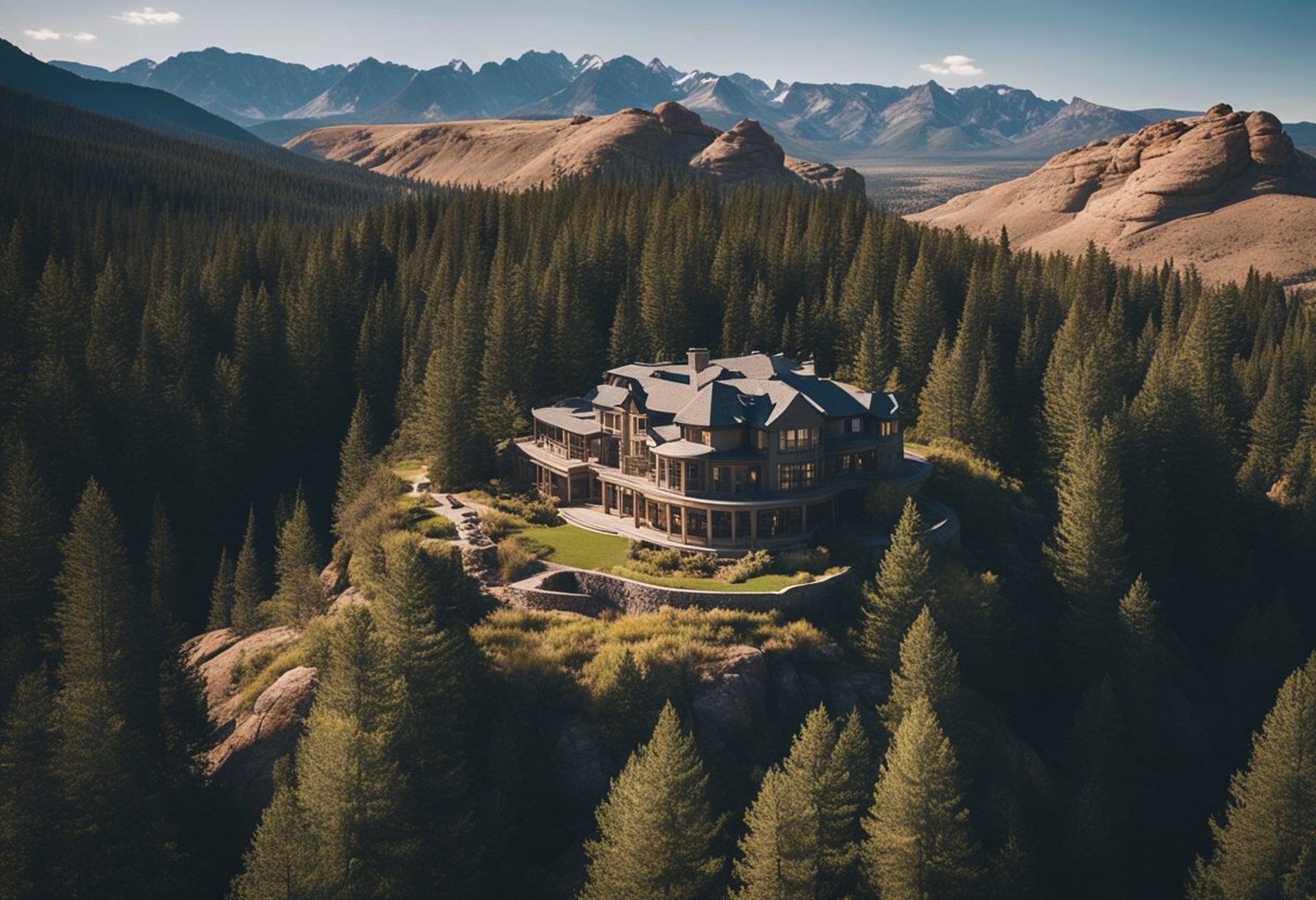Utah Off Grid Mansion: Luxurious Living in Sustainable Isolation
In the picturesque landscapes of Utah, off-grid mansions offer a unique blend of luxury and self-sufficiency. These homes allow residents to live sustainably while enjoying the comforts often found in traditional mansions. Off-grid living appeals to many who seek a connection with nature, coupled with the modern amenities that a lavish lifestyle entails.
Utah Off Grid Mansion: Luxurious Living in Sustainable Isolation
In the picturesque landscapes of Utah, off-grid mansions offer a unique blend of luxury and self-sufficiency. These homes allow residents to live sustainably while enjoying the comforts often found in traditional mansions. Off-grid living appeals to many who seek a connection with nature, coupled with the modern amenities that a lavish lifestyle entails.
Building an off-grid mansion requires careful planning and an understanding of energy sources, water supply, and waste management. Many homeowners are embracing this lifestyle to reduce their carbon footprint and achieve greater independence. This growing trend in Utah reflects a broader movement toward sustainable living without sacrificing comfort.
Finding real-life examples of off-grid mansions reveals innovative designs and practical solutions that inspire others to consider this lifestyle. From solar panels to rainwater harvesting systems, the integration of technology and nature creates a harmonious living environment.
Key Takeaways
Off-grid mansions in Utah combine luxury with sustainability.
Building these homes requires knowledge of essential survival systems.
Real-life examples demonstrate innovative approaches to off-grid living.
Concepts and Essentials of Off-Grid Living
Living off the grid offers a lifestyle that prioritizes self-sufficiency and independence from municipal utilities. Understanding the core principles and essential components is crucial for anyone considering this path.
What It Means to Live Off the Grid
Living off the grid means disconnecting oneself from traditional utility services such as electricity, water, and sewer systems. Individuals who pursue this lifestyle often seek autonomy and a closer connection to nature.
This approach requires a commitment to sustainable practices, including relying on renewable energy sources like solar or wind power. Off-grid living often involves a smaller ecological footprint and the ability to lead a simpler life. It fosters skills in resourcefulness, as inhabitants learn to generate their own electricity, manage water supplies, and handle waste management.
Key Components of an Off-Grid Home
An off-grid home is designed to support self-sufficiency across several key areas:
Energy Sources: Utilizing solar panels, wind turbines, or micro-hydro systems to generate electricity. This renewable energy provides necessary power for appliances and devices.
Water Supply: Collecting rainwater or sourcing from wells. Filtration and purification systems are essential for ensuring water quality.
Waste Management: Implementing composting toilets or septic systems. This approach minimizes environmental impact while maintaining sanitation.
Heating and Cooling: Using passive solar design or wood-burning stoves to regulate temperatures energy-efficiently.
Food Production: Many off-grid homes include gardens or small livestock to grow food, reducing dependence on external markets.
These components create a holistic system that supports a sustainable lifestyle, enabling individuals to thrive without reliance on conventional infrastructure.
The Appeal of Off-Grid Mansions in Utah
Off-grid mansions in Utah attract many for their unique blend of luxury, sustainability, and privacy. Their appeal lies in the ability to live independently while enjoying high-quality living standards in stunning settings.
Eco-Friendly Benefits
Off-grid mansions have a strong focus on sustainability, often employing renewable energy sources like solar panels and wind turbines. This commitment to eco-friendliness significantly reduces the carbon footprint associated with luxury living.
Many off-grid homes utilize advanced Energy-Efficient systems, including geothermal heating and rainwater collection. These features not only conserve resources but also lead to lower utility costs over time.
Residents can customize systems to suit individual needs, enhancing sustainability while maintaining comfort. By living off-grid, they contribute to environmental conservation and promote a lifestyle that prioritizes ecological responsibility.
Privacy and Self-Sufficiency
Living in an off-grid mansion offers unmatched privacy. Nestled in Utah’s picturesque landscapes, these homes provide a retreat from urban life. The secluded locations shield residents from prying eyes while maximizing tranquility.
Self-sufficiency is another draw for many. Having control over essential resources means individuals can live without reliance on typical utilities.
This independence fosters a unique lifestyle that many find rewarding. It also cultivates an environment where one can thrive, free from the pressures of city life, enhancing overall well-being.
Architectural and Design Considerations
The architectural design of off-grid mansions often harmonizes with the surrounding environment. They frequently feature natural materials, large windows, and open layouts that promote connection to nature.
Design considerations also include sustainable technologies like energy-efficient appliances and smart home systems, which optimize resource use. These features enhance luxury while ensuring minimal environmental impact.
Homeowners often personalize spaces with eco-friendly landscaping, using native plants to reduce water consumption. This thoughtful approach to design not only elevates aesthetics but also aligns with sustainable living principles.
Practical Aspects of Building Off-Grid Homes
Building an off-grid home involves several critical factors including land acquisition, energy solutions, and managing water and waste. Each of these aspects requires careful planning and adherence to local regulations to ensure a sustainable and functional living environment.
Land Acquisition and Zoning Laws
Selecting the right piece of land is crucial for an off-grid home. Buyers should investigate local zoning laws as these dictate what can be built and how land can be used.
Key considerations include:
Zoning Restrictions: Understanding residential, agricultural, and commercial designations can impact development.
Permitting Process: Some areas require permits for off-grid systems, including renewable energy sources.
Accessibility: Evaluate road access for emergency services, material deliveries, and daily commuting.
Researching the local landscape also helps in identifying potential challenges such as soil quality, which influences construction and gardening.
Energy Generation and Storage
Choosing the right energy systems is vital for an off-grid lifestyle. Most homeowners rely on renewable energy sources.
Common options include:
Solar Panels: A popular choice, they convert sunlight into electricity and can be paired with battery storage for night use.
Wind Turbines: If the location has consistent winds, small wind turbines can supplement power.
Backup Generators: Gas or propane generators can provide emergency power during prolonged periods of low renewable generation.
Proper energy storage solutions, such as lithium-ion batteries, are important to ensure a consistent power supply. Energy efficiency should also be a focus, utilizing appliances that consume less power.
Water and Waste Management
Water sourcing and waste disposal are key when living off-grid. Homeowners must establish how to access and manage water sustainably.
Considerations include:
Water Sources: Options typically involve drilled wells, rainwater harvesting, or water delivery services.
Filtration Systems: Ensuring water quality requires reliable filtration and purification methods.
Waste Management: Composting toilets and septic systems need careful planning to adhere to local regulations and minimize environmental impact.
Developing a sustainable approach to both water and waste enhances self-sufficiency and reduces dependence on external systems.
Real-Life Examples and Case Studies
Exploring real-life examples of off-grid homes reveals a variety of unique designs and experiences. These profiles illustrate both the successes and challenges faced by those living off the grid.
Profiles of Off-Grid Homes
Many off-grid homes reflect a commitment to self-sufficiency and creativity. For instance, a rustic off-the-grid cabin in Utah utilizes solar panels and a rainwater collection system, showcasing sustainable living.
Another example includes a modern off-grid home built entirely from reclaimed materials. It features energy-efficient appliances and a stellar insulation design. These homes typically incorporate natural elements and adaptive technologies to minimize environmental impact.
Key Features of Off-Grid Homes:
Energy Sources: Solar, wind, or hydroelectric power.
Water Supply: Rainwater harvesting or wells.
Waste Management: Composting toilets and greywater systems.
Success Stories and Challenges
Many families thrive in off-grid settings, embracing a simpler lifestyle. A notable story involves a couple who transformed a secluded property into an eco-friendly haven, overcoming the obstacles of harsh winters and limited access to resources.
Challenges often arise, such as maintaining energy during cloudy days or ensuring reliable water supply. Success depends on the ability to adapt and innovate.
Common Challenges:
Seasonal Resource Variation: Adapting systems for winter usage.
Building and Permits: Navigating local regulations for construction.
These real-life experiences highlight the practicalities of off-grid living while illustrating the potential for a rewarding lifestyle.




